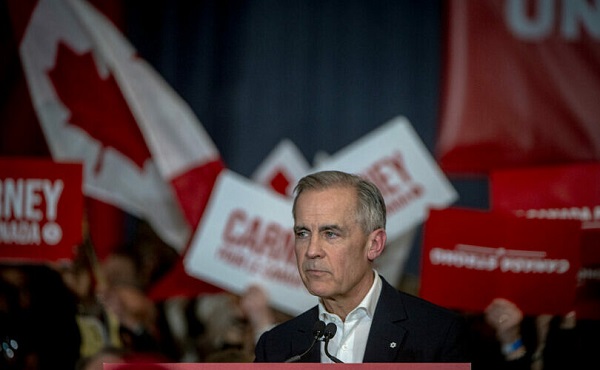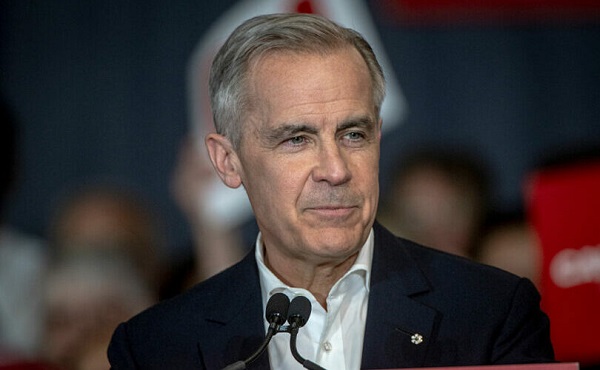‘When I use a word,’ Humpty Dumpty said in rather a scornful tone, ‘it means just what I choose it to mean – neither more nor less.’
—Alice Through the Looking Glass, by Lewis Carroll
Words can be like tiny doses of arsenic; they are swallowed unnoticed, appear to have no effect, and then after a little time the toxic reaction sets in after all.” That is how Victor Klemperer, a German Jew who miraculously survived Hitler’s Germany, described the Nazi regime’s manipulation of words and their meaning in his 1957 book The Language of the Third Reich. The endless public repetition of fascist idioms and phrases regarding race, duty and country, Klemperer argued, turned the German population into unthinking servants of the Nazi cause.
The approach in the Soviet Union was different in tactics but no less destructive. “Total power over the Word gives the Master of the Word a magical power over all communications,” wrote Russian historian Mikhail Heller in his 1988 book Cogs in the Wheel: The Formation of Soviet Man. By using fear and intimidation to control what its citizens could say, the Communist regime was able to control what they thought as well. “The Soviet language became the most important means of preventing people from acquiring more knowledge than the state wished,” explained Heller.
 The power of words: As Holocaust survivor Victor Klemperer described in his book The Language of the Third Reich, the endless repetition of Nazi slogans and idioms about race and duty turned the German people into unthinking automatons in service to Adolf Hitler’s fascist regime.
The power of words: As Holocaust survivor Victor Klemperer described in his book The Language of the Third Reich, the endless repetition of Nazi slogans and idioms about race and duty turned the German people into unthinking automatons in service to Adolf Hitler’s fascist regime.
Western democracies crushed Nazism and then faced down the Soviet Empire through intense military and economic competition as well as the promise of freedom. Today, however, these forces of linguistic control are again being wielded by propagandists embedded deep within our own society. It is now common for words to be assigned meanings that either signify the opposite of what they once did, or are bastardized in some way as to be unmoored from any permanent or coherent definition. And always with political purpose.
The redefinition of sex as socially-constructed gender and the creation of a multiplicity of gender identities – enforced by intense institutional pressure but lacking any scientific evidence or logic – is just one example of this destructive wordplay. The poisonous concept of “anti-racism”, which has become cover for the implementation of many explicitly racist policies, is another.
What were once benign notions of markets, entrepreneurship and the free exchange of ideas, goods and services have been corrupted and/or smeared by the left.
As Trent University historian Christopher Dummitt recently pointed out in the National Post, a blizzard of new terms has been invented to remove the concept of personal responsibility from all public discourse. The homeless, once “vagrants”, are now referred to as “the unsheltered”, the free distribution of harmful illegal drugs has become “harm reduction”, and self-administered drug overdoses have been rebranded as “accidental poisonings”.
 Everyone’s a victim. As Trent University historian Christopher Dummitt (bottom) has pointed out, current terminology regarding drug use erases any sense of personal responsibility; the free distribution of harmful illegal drugs is now called “harm reduction” and self-administered overdoses are “accidental poisonings”. (Sources of photos: (top) Ted’s photos – Stand With Ukraine, licensed under CC BY-NC-SA 2.0; (bottom) Christopher Dummitt)
Everyone’s a victim. As Trent University historian Christopher Dummitt (bottom) has pointed out, current terminology regarding drug use erases any sense of personal responsibility; the free distribution of harmful illegal drugs is now called “harm reduction” and self-administered overdoses are “accidental poisonings”. (Sources of photos: (top) Ted’s photos – Stand With Ukraine, licensed under CC BY-NC-SA 2.0; (bottom) Christopher Dummitt)
The underlying purpose, Dummitt explains, is ideological. “The intention is clear: to remove stigma and any overt suggestion of personal responsibility,” he wrote. “The new names are meant to reorient our thinking so that we understand that the real causes of misfortune to be societal or systemic. If a word has shameful connotations, that seems to be enough to warrant change.”
The same conceptual reorganization is at play with how Canadians discuss fundamental economic and intellectual concepts as well. What were once benign notions of markets, entrepreneurship and the free exchange of ideas, goods and services have been corrupted and/or smeared by the left in the same way that personal responsibility has been erased from public conversations through the appearance of new words and meanings for drug use and other individual failings.
With this damaging process threatening the very conception of private property and individual economic freedom, C2C Journal has curated a list of 11 terms currently being used propagandistically by the left. It includes long-established words redefined in deliberately unsettling ways and tired old socialist objectives disguised as market-friendly innovations as well as some outright fabrications. We call this our “Anti-Capitalist Dictionary”. Each word or phrase listed below is introduced with an example of its typical current usage (that is to say, its misusage), along with the source of the example, and then a discussion/deconstruction of its flaws. Finally, we offer a truthful alternative to use in its place. As they say, forewarned is forearmed.
Child Care Deserts
Typical usage: “Saskatchewan has the highest proportion of children living in child care deserts by far.”
—Not Done Yet: $10-a-day child care requires addressing Canada’s child care deserts, by David MacDonald and Martha Friendly, May 2023
A “child care desert” refers to an area that is said to be short of daycare spaces. And while the federal government’s heavily subsidized, $10 per day child care program was promoted as the means to create a jungle of new spaces at a phenomenally low cost, Canada appears strangely awash in “deserts” as parents everywhere complain about a worsening shortage of spaces. Among child care advocates, this situation is cause for even greater government spending (or “investment” as they misleadingly put it). The desert must be defeated!
 A self-inflicted “desert”: The dire shortage of childcare spaces across Canada is largely the result of federal policies that forbid or curtail the participation of for-profit centres in Ottawa’s $10 per day child care program. (Sources of photo: Global News)
A self-inflicted “desert”: The dire shortage of childcare spaces across Canada is largely the result of federal policies that forbid or curtail the participation of for-profit centres in Ottawa’s $10 per day child care program. (Sources of photo: Global News)
As previous C2C Journal articles have shown, however, this rampant desertification is a direct result of a federal plan that explicitly discriminates against for-profit daycare providers. In many provinces, private operators deliver the majority of child care spaces. If the goal is to boost the supply of practically anything, the private sector is nearly always nimbler and more cost-effective than the public or non-profit sectors. For this reason, Ottawa’s attack on private child care providers is doing great harm to parents. It’s no coincidence that Saskatchewan is the Sahara of Canada’s child care deserts; it also has the nation’s lowest share of for-profit child care. By treating Canada’s child care shortages as some sort of external force of nature – one that only governments can withstand and conquer – child care activists are deliberately ignoring the importance of private capital and entrepreneurship to the daycare ecosystem.
Accurate alternative: “An absence of private sector supply.”
Denialism
Typical usage: “Residential school denialists employ an array of rhetorical arguments. The end game of denialism is to obscure truth about Canada’s Indian Residential School system in ways that ultimately protect the status quo as well as guilty parties.”
—Truth before reconciliation: 8 ways to identify and confront Residential School denialism, by Daniel Heath Justice and Sean Carleton, University of British Columbia website
“Denialism” is frequently used as a slur against anyone who questions an established narrative. Most recently it has been applied to those who challenge claims that Canada’s Indian Residential School system was a deliberate program of genocide. But it also serves to advance numerous other ideological agendas. For example, Ross McKitrick, an economist at the University of Guelph, Ontario well-known for his rigorous, science-based approach to climate change, notes that he’s often denounced as a “denialist” when he uses evidence to point out holes in accepted green energy policy orthodoxy. This includes revealing the true (and often astronomical) cost of policies to “fight” climate change.
 Sticks and stones: For his science-based criticism of green energy policies, Ross McKitrick (left), an economist at the University of Guelph, is frequently tarred with claims he is a “denialist” by opponents unwilling to debate him on the merits of his arguments. (Sources: (left screenshot) Bridge City News/YouTube; (right photo) powerofgreatbarrierreef, licensed under CC BY 2.0)
Sticks and stones: For his science-based criticism of green energy policies, Ross McKitrick (left), an economist at the University of Guelph, is frequently tarred with claims he is a “denialist” by opponents unwilling to debate him on the merits of his arguments. (Sources: (left screenshot) Bridge City News/YouTube; (right photo) powerofgreatbarrierreef, licensed under CC BY 2.0)
“The facts are clearly on one side, but if you stand up and point this out, you get called a denier,” McKitrick says in an interview. The insult’s impact is intensified by the fact the term originally stems from denial of the Holocaust. Observes McKitrick: “Opponents are thus treating you like a psychology case, rather than engaging with you on the merits of your argument.” It is a thoroughly nasty dodge for activists who are unprepared to defend their own position. Asked whether he has a preferred term for someone who questions established beliefs from a fact-based perspective, McKitrick suggests, somewhat wryly, “glorious truth-teller.” That works for us.
Accurate alternative: “Glorious truth-telling.”
Environmental Racism
Typical usage: “Environmental racism is a direct by-product of colonialism.”
—Fast Talk on Environmental Racism in Canada, Canadian Human Rights Commission, February 16, 2023
“Environmental racism” is a deliberately provocative term invented to explain why low-income individuals and families tend to live in less desirable (and hence cheaper) neighbourhoods or areas. Given that black and Indigenous families have a greater likelihood of having low incomes than other groups, this outcome is now declared racist.
Prior to the modern-day habit of labelling every situation of unequal outcomes in this way, such a scenario was known to economists as Ricardian land rents, after 19th century British economist David Ricardo. It was Ricardo’s insight that the price of land is determined by its most productive use. If land on the outskirts of town or nearer a pulp mill is less desirable or less productive than land in a city’s downtown core or beside a lake, then it will also be cheaper – and thus more affordable for people with lower incomes.
 Cheap room for rent: As 19th century British economist David Ricardo (left) first explained, the price of land is determined by its most productive use, which is why low-income families tend to live in less desirable – and less expensive – neighbourhoods. (Source of right photo: Shutterstock)
Cheap room for rent: As 19th century British economist David Ricardo (left) first explained, the price of land is determined by its most productive use, which is why low-income families tend to live in less desirable – and less expensive – neighbourhoods. (Source of right photo: Shutterstock)
“Most people don’t want to live adjacent to heavy industry et cetera, so people with lower incomes tend to move into those areas,” economist McKitrick observes. But calling this process environmental racism “gets the cause and effect backwards,” he says. There is no prejudice at work; low-income people moving to cheaper areas is simply a demonstration of the market at work.
Accurate alternative: “Cheap land means cheap rent.”
Equity
Typical Usage: “Equity: the principle of considering people’s unique experiences and differing situations, and ensuring they have access to the resources and opportunities that are necessary for them to attain just outcomes. Equity aims to eliminate disparities and disproportions that are rooted in historical and contemporary injustices and oppression.”
—Guide on Equity, Inclusion and Diversity, Government of Canada, 2022
 Words turned upside-down: As Wilfrid Laurier University finance professor William McNally points out, “equity” as currently practiced on campuses entails deliberate unfairness towards certain groups. The same linguistic inversion has occurred with the related terms “diversity” and “inclusion”.
Words turned upside-down: As Wilfrid Laurier University finance professor William McNally points out, “equity” as currently practiced on campuses entails deliberate unfairness towards certain groups. The same linguistic inversion has occurred with the related terms “diversity” and “inclusion”.
Not that long ago, equity was defined as “the quality of being impartial; fairness,” as a desk copy of the 1988 Collins Concise Dictionary of the English Language explains. More recently, however, this definition has been turned on its head. “Equity”, as currently employed by governments, activists and other woke-infected institutions, entails the deliberately unequal treatment of individuals in order to fabricate uniform outcomes between groups. Instead of being fair to all job candidates, for example, equity now requires that individual applicants be treated very differently based on group membership or characteristics such as race, ethnicity, sex, gender or disability.
“My own school is a great example of this inherent unfairness,” says William McNally, a business professor at Wilfrid Laurier University’s Lazaridis School of Business and Economics in Waterloo, Ontario and an outspoken critic of diversity, equity and inclusion policies. “We now have teaching positions that are only available to black or Indigenous applicants. Whites are not allowed to apply,” he says in an interview. By suppressing or even abandoning the key criterion of individual merit, the school’s hiring process is being manipulated to achieve a particular, ideologically-driven outcome that is unfair to most potential candidates. In similar fashion, McNally observes, diversity has come to mean “people who look differently, but all think the same.” And inclusion now means the deliberate exclusion of many qualified candidates.
Accurate alternative: “Blatant favouritism.”
Excessive Net Profits
Typical Usage: “The Committee recommends that the Government of Canada consider implementing policies to effectively tackle excessive net profits in monopolistic and oligopolistic sectors in the food supply chain, which are driving up prices for consumers.”
—Report of the Standing Committee on Agriculture and Agri-Food, House of Commons, May 2024
A recent House of Commons Agriculture and Agri-Food subcommittee report on food prices concocted the phrase “excessive net profits” to attack grocery companies. While politically useful, given popular concern over rising food costs, it betrays a fundamental lack of knowledge about accounting and prices. It is redundant to refer to “net profits”, as profits are already calculated on a net basis. If the intent is to examine some share of those profits, the term unhelpfully fails to indicate which items should be netted out.
 Villainizing the retailer: A recent House of Commons subcommittee blamed food inflation on the “excessive net profits” of food stores. In fact, grocery retailer Loblaws’ profit margin is a measly 3.4 percent. (Source of photo: BlogTO)
Villainizing the retailer: A recent House of Commons subcommittee blamed food inflation on the “excessive net profits” of food stores. In fact, grocery retailer Loblaws’ profit margin is a measly 3.4 percent. (Source of photo: BlogTO)
As for the concept of what constitutes an excessive level of profits, that is an entirely subjective matter beyond the ken of any subcommittee. The profit margin (net earnings divided by gross revenue) at Loblaw Companies Ltd., the corporation at the centre of today’s political ire about food inflation, is a measly 3.4 percent, based on its most recent financial statements. By way of comparison, the profit margin at online retailer Amazon is a robust 9.1 percent, while at computer chip manufacturer Nvidia it’s an eye-popping 55 percent. How excessive is that? With store-bought food inflation peaking at 11.4 percent in 2023, the rising cost of food would be a problem for Canadians even if Loblaw operated on a break-even basis.
By misidentifying the problem of profits, the Liberal-dominated subcommittee promotes the socialistic notion that government has a legitimate role in setting prices and establishing an appropriate level of income across industries. As the devastating effects of rent controls on the supply of rental housing readily illustrate, this is complete folly. Profit is the essential inducement for entrepreneurs to provide needed goods and services. And rising profits in a given industry or in the production of a given good or service signal that there is opportunity for additional profitable competition; this, in turn, brings prices back down. Canada is already experiencing a productivity crisis driven by a lack of capital and investment in productivity-enhancing machinery; telling entrepreneurs there is a government-mandated upper limit on their profitability will only exacerbate this potentially catastrophic problem.
Accurate alternative: “There is no competition without profit.”
Financialization
Typical usage: “The financialization of housing is recognized as a trend that is undermining the realization of the right to adequate housing.”
—The Financialization of Housing: A Summary Report for the Office of the Federal Housing Advocate, by Martine August, June 2022
What used to be known as ready access to capital – and considered a good thing – has been ominously relabeled as “financialization”, and become the all-purpose boogeyman of Canada’s housing crisis. Rather than pointing to the obvious imbalance between constrained housing construction and soaring demand caused by runaway immigration, the Office of the Federal Housing Advocate (FHA) repeatedly claims that housing-industry investors seeking to earn a return on their capital are the true cause of Canada’s housing affordability crisis. And the FHA’s solution is to eliminate the profit motive from the housing supply by advocating for a government/regulatory takeover of the industry which would make it impossible for entrepreneurs to survive.
 The boogeyman of the housing industry: According to the Office of the Federal Housing Advocate, “financialization” is to blame for Canada’s current housing crisis, and the solution is to eliminate entrepreneurs and profit from the entire sector. (Source of photo: Colin N. Perkel/Shutterstock)
The boogeyman of the housing industry: According to the Office of the Federal Housing Advocate, “financialization” is to blame for Canada’s current housing crisis, and the solution is to eliminate entrepreneurs and profit from the entire sector. (Source of photo: Colin N. Perkel/Shutterstock)
The fight against financialization also has the FHA demanding that Ottawa erase any tax benefits associated with real estate investment trusts (REITs). Such a policy, as an EY consultancy report (link requires signing in) found, would “slow growth in the supply of available rental units” and thus worsen the housing crisis. Despite an earlier promise to stamp out financialization, however, Ottawa recently promised not to levy any new taxes on REITs. This was a rare wise move by Ottawa on housing policy. Canada requires more investors, more real estate developers and more property managers. Without the enormous financial resources and deep expertise of motivated real estate investors, including REITs, it will be impossible to meet the country’s need for 3.5 million new homes by 2030.
Accurate alternative: “Building a lot of homes requires a lot of money.”
Living Wage
Typical usage: “The living wage is a bare-bones calculation that looks at the amount that a family of four needs to earn to meet their expenses.”
—Living Wage for Families BC website
Promoted by social advocacy groups as a replacement for the minimum wage, a “living wage” is always much higher than the legal minimum since it is intended to allow a sole earner to support a family not merely with bread on the table and a roof over their heads, but with other amenities such as holidays, a savings account and a gift budget. In other words, it is intended to provide a single-income household with a middle-class lifestyle.
Yet research by the Canadian Federation of Independent Business shows that only 1.5 percent of minimum-wage earners are single parents with a child to support. Presumably, even fewer comprise a 1950s-style nuclear family with one wage-earner and one stay-at-home parent. The vast majority of minimum-wage earners are actually under 25 and living with their parents. Accordingly, replacing current minimum wages with a living wage of $25 per hour or more will not make life better for struggling families. Rather, it will harm the economy’s youngest and least employable workers by making them too expensive to hire. A better approach can be found in Alberta, where the minimum wage for workers under 18 years is two dollars less per hour than for adults, reflecting their lower productivity and greater need for training.

“Living wage” is also an example of the left’s frequent linguistic tactic of framing market-based alternatives to their favoured policies as despicable, if not deadly. What is the opposite of a living wage? It must be a death wage.
Accurate alternative: “Youth-employment-reducing wage.”
Organizational Elder Abuse
Typical usage: “Lions Housing Centres and the Lions Club of Winnipeg have been accused of inflicting ‘organizational elder abuse’ on seniors because of the way they sold Lions Place to a for-profit real estate company in 2023.”
— “Tenants of former Lions Place victims of ‘organizational elder abuse’: report” by Kevin Rollason, Winnipeg Free Press, April 23, 2024
This phrase appears to have been invented by the left-wing lobby group Canadian Centre for Policy Alternatives (CCPA) in a report on the sale of a Winnipeg seniors’ home run by the Lions Club, a charitable organization, to a private firm earlier this year. A Betrayal of Trust: Exploring the Financialization of Lions Place in Winnipeg as a Case of Organizational Elder Abuse offers no evidence that residents of the home have been mistreated in any way. Rather, the mere fact that the new owner, Mainstreet Equities, intends to make a profit while continuing to operate the facility amounts to “elder abuse” in the CCPA’s eyes. (Note that the report also makes use of the bogus term “financialization” for a twofer of leftist linguistic misdirection.)
 Inventing abuse: The recent sale of a seniors’ home in Winnipeg was declared “organizational elder abuse” by the Canadian Centre for Policy Alternatives, reflecting the left-wing view that making a profit while delivering care is somehow illegal or immoral. (Source of photo: Josh Crabb/CBC)
Inventing abuse: The recent sale of a seniors’ home in Winnipeg was declared “organizational elder abuse” by the Canadian Centre for Policy Alternatives, reflecting the left-wing view that making a profit while delivering care is somehow illegal or immoral. (Source of photo: Josh Crabb/CBC)
“Organizational elder abuse” is an insult to the entire private sector and reminiscent of campaigns that seek to banish for-profit operators from other sectors dominated by high-cost, inefficient public-sector unions, such as health care and child care. The fact that actual elder abuse is a criminal act promotes the left-wing notion that even the most basic economic function of earning a profit is somehow illegal or immoral.
Wordplay aside, the private sector has a critical and successful role to play in the provision of assisted-living and long-term care for seniors in a number of provinces, as this and this C2C article described. And, judging by the long waiting lists for obtaining residency in many of these centres, seniors generally like what these companies are offering.
Accurate alternative: “Asset sold by a motivated seller to a willing buyer.”
Renoviction/Demoviction
Typical usage: “Renoviction is a huge source of housing loss.”
—Ontario Renoviction Report 2024, ACORN Canada, February 2024
So far, the anti-capitalist terms evaluated have employed real English words that can be compared to their ordinary, historical or technical meanings. Here, we encounter complete gibberish. “Renoviction” or “demoviction” are portmanteaus invented to describe the situation in which a landlord evicts existing tenants in order to clear the way for a substantial renovation to an apartment that can then be re-let at higher rent, or tears down the entire building to put up something new, again to generate greater revenue.

While these processes are perfectly legal under certain conditions – and wholly understandable given the need for constant housing renewal – they have lately become nasty insults used by housing advocates and politicians to denigrate landlords generally. Some cities are even enacting bylaws to prevent both practices, erasing landlords’ property rights as owners and putting tenants in control of buildings they do not own. Such policies will clearly discourage further investment in housing at a time when the country desperately needs more and better houses. Investing one’s own money to improve the local stock of housing was once considered a good thing for everyone. Today, however, some politicians would rather let it all rot. The solution lies in recognizing landlords as the best-situated and most-effective custodians of the country’s rental stock.
Accurate alternative: “Improving Canada’s housing stock at no cost to taxpayers.”
Responsible Investing/Sustainable Investing/Impact Investing
Typical usage: “Responsible investment (RI) refers to the incorporation of environmental, social and governance factors (ESG) into the selection and management of investments. RI has boomed in recent years as investors have recognized the opportunity for better risk-adjusted returns, while at the same time, contributing to important social and environmental issues.”
—Responsible Investment Association website
“Responsible”, “sustainable” or “impact” investing holds that investors should weigh a variety of non-financial goals when choosing where to put their money. The goal is to “do good” with one’s investments by, for example, choosing green energy firms over those in the oil and natural gas sector. But adding moralistic objectives to one’s investment mix is “delusional”, writes Aswath Damodaran, a widely-respected guru of financial valuation at the Stern Business School at New York University. It is also another example of the twisted language of ideologically-driven alternatives, similar to “living wage” as discussed above. Having identified a practice as “responsible” investing, all other forms of investing – every stock, every bond, every mutual fund, every holding in every pensioner’s retirement fund – must implicitly be irresponsible.
 More like “irresponsible” investing: Financial valuation expert Aswath Damodaran of New York University’s Stern Business School considers the inclusion of environmental, social and governance (ESG) goals as part of “responsible” or “sustainable” investing to be “delusional”, because of the additional costs and losses it imposes on investors.
More like “irresponsible” investing: Financial valuation expert Aswath Damodaran of New York University’s Stern Business School considers the inclusion of environmental, social and governance (ESG) goals as part of “responsible” or “sustainable” investing to be “delusional”, because of the additional costs and losses it imposes on investors.
While the vast majority of impact investors believe their ESG-flavoured decisions are costless – that is, have no effect on their overall investment returns – diverting their focus away from financial performance inevitably lowers returns because it constrains the list of potential investment opportunities, as Damodaran points out. It also leads investors to tolerate inefficiency and costly diversions among the “sustainable” companies they favour. As Damodaran observes, “After 15 years and trillions invested in its name, impact investing, as practiced now, has made little progress on the social and environmental problems that it purports to solve.” As he concludes, “Is it not time to try something different?” Pushback against these investment techniques is well underway in the U.S., and just beginning in Canada.
Accurate alternative: “Making less money while doing no good.”
Stakeholder Capitalism
Typical usage: “Stakeholder capitalism is not about politics. It is not a social or ideological agenda. It is not ‘woke.’ It is capitalism.”
—The Power of Capitalism, by Larry Fink, 2022 letter to Blackrock shareholders
Popularized by World Economic Forum founder Klaus Schwab, “stakeholder capitalism” involves corporations making decisions that may go against the best interests of their shareholders by pursuing the interests of other groups – or “stakeholders” – such as government regulators, community activists, fashionable global causes or the public at large. This can include accommodating the demands of organizations explicitly hostile to the company and its industry, as well as a multiplicity of other targets comprising social and environmental indicators unrelated to the firm’s core business. Climate-related “Net Zero” commitments by various corporations are an obvious current example.
“Under stakeholder capitalism, CEOs and boards are supposed to weigh all these different competing interests,” says Laurier finance professor McNally in an interview. “But they get to choose which ones – it could be gender equity or decarbonization or racial social justice. And this is a profoundly undemocratic process. The shareholders who actually own the company don’t have any say in it.” Not surprisingly, these corporate fetishes rarely come cheap, and there is evidence that stakeholder-focused companies earn lower returns than good old-fashioned shareholder-driven ones.
 Spending someone else’s money: As Nobel Prize-winning economist Milton Friedman (left) noted in a 1970 New York Times essay, so-called “stakeholder” capitalism – subordinating shareholders’ rights in favour of other interests – is tantamount to theft. At right, activists protest Chevron’s annual shareholder meeting. (Source of right photo: Rainforest Action Network, licensed under CC BY-NC 2.0)
Spending someone else’s money: As Nobel Prize-winning economist Milton Friedman (left) noted in a 1970 New York Times essay, so-called “stakeholder” capitalism – subordinating shareholders’ rights in favour of other interests – is tantamount to theft. At right, activists protest Chevron’s annual shareholder meeting. (Source of right photo: Rainforest Action Network, licensed under CC BY-NC 2.0)
For the alternative viewpoint, McNally points to a famous 1970 New York Times essay by Nobel Prize-winning economist Milton Friedman. In it, Friedman argued that executives who allow political or social justice interests to distract them from pursuing their shareholders’ best interests – above all, safeguarding their capital – are “spending someone else’s money” on pet projects and should be considered guilty of theft. Nonetheless, advocates such as Fink are now promoting stakeholder capitalism – what Friedman called “pure and unadulterated socialism” – as the only true form of capitalism. It is a complete inversion of reality.
Accurate alternative: “Playing politics with other people’s money.”
Conclusion
The above list is obviously not exhaustive. Indeed, it is barely a beginning. The primary purpose of the Anti-Capitalist Dictionary is to remind readers that words matter and alert them to the widespread presence of corrupted, concocted or bogus terms in general usage. Calling wind turbines “green” or “sustainable” energy, to mention some additional possible entries, not only engenders positive feelings among many people, but influences their thinking about what these things actually are and how they work. It is thus useful that Alberta Premier Danielle Smith, for example, now refers to wind and solar power as – entirely accurately – “intermittent and unreliable”. This draws attention to the fact they cannot be relied upon to serve as base-load power in the way that nuclear, natural gas-fired or hydroelectric facilities can and do. There is nothing sustainable about an energy source that cannot be trusted when needed.
Having identified a practice as ‘responsible’ investing, all other forms of investing – every stock, every bond, every mutual fund, every holding in every pensioner’s retirement fund – must implicitly be irresponsible.
Beyond these specific examples, the Anti-Capitalist Dictionary’s other purpose is to reveal the damage being done to fundamental economic concepts that are crucial to the flourishing of a democratic society. It has been proven time and again throughout history (and often at great cost) that markets – the free and open exchange of ideas, goods or services – are the best and most efficient method of determining values, assessing needs and allocating resources. Today, however, as in totalitarian regimes of the past, we are witnessing a determined effort to replace time-proven market mechanisms with systems that impose government interference and diktat as the operating devices.
One of the main tools for this revolution is language. In this way, landlords have become cold-hearted “renoviction” machines, corporations stand accused of earning “excessive net profits” at the expense of hapless families, capital investment in new housing – “financialization” – is to blame for Canada’s housing crisis, the legitimate sale of a building is “elder abuse”, heterodox thinkers are “denialists”, socialism is really capitalism, and so on down the rabbit hole. Words have become weapons aimed at destroying markets and individual freedoms. This must be resisted.
 Making lies truthful and murder respectable: George Orwell famously warned of the many linguistic tricks and falsehoods used by propagandists in his 1946 essay Politics and the English Language. The only defence against this onslaught of confusion, he argued, was a rigorous commitment to truth and clarity in one’s own writing and speech. (Source of right photo: Vic Hinterlang/Shutterstock)
Making lies truthful and murder respectable: George Orwell famously warned of the many linguistic tricks and falsehoods used by propagandists in his 1946 essay Politics and the English Language. The only defence against this onslaught of confusion, he argued, was a rigorous commitment to truth and clarity in one’s own writing and speech. (Source of right photo: Vic Hinterlang/Shutterstock)
In his famous 1946 essay Politics and the English Language, George Orwell anticipated many of the linguistic tricks and falsehoods described above. “Political language,” he wrote, “is designed to make lies sound truthful and murder respectable, and to give an appearance of solidity to pure wind. One cannot change this all in a moment, but one can at least change one’s own habits.” The truth starts one word at a time.
Peter Shawn Taylor is senior features editor at C2C Journal. He lives in Waterloo, Ontario.




















